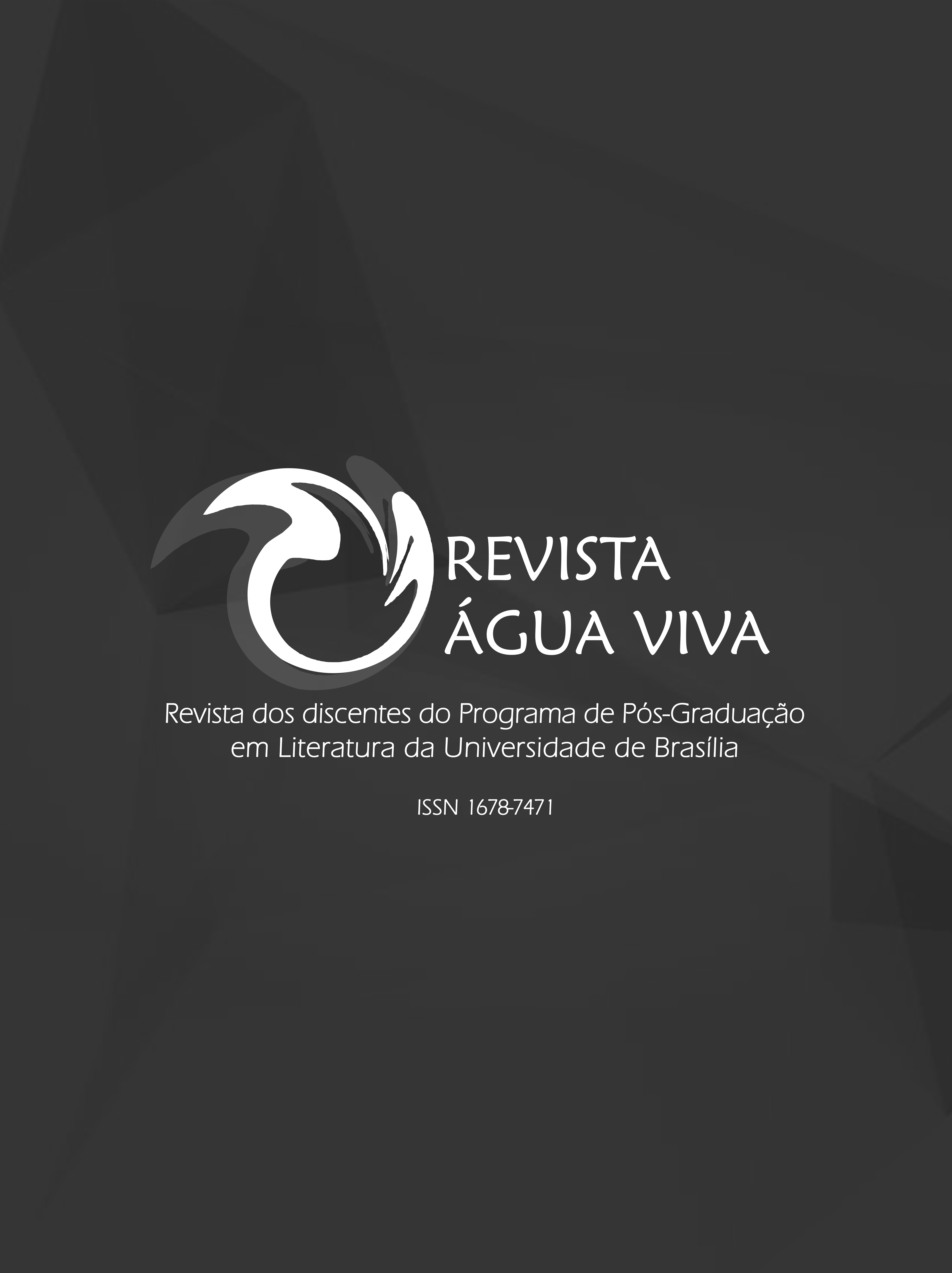THE IMPORTANCE OF THE SCIENCE FICTION TO TRAINING NEW SCIENTISTS AND IN THE PRODUCTION OF NEW TECHNOLOGIES
DOI:
https://doi.org/10.26512/aguaviva.v6i2.38282Keywords:
Science Fiction, Science Teaching, Carl Sagan, Isaac AsimovAbstract
When Science Fiction comes into mind, it is common to think about mad scientists, isolated labs and eccentric experiments. Be by coining new terms or amazing younger generations with the science behind the stories, the science fiction it is a useful and underestimated tool, which could be used either on teaching science to children and teenagers or in the scientific divulgation of new theories and concepts. In this article, we will analyze the life of two icons of the science and science fiction from the past century, Carl Sagan and Isaac Asimov, and how the science fiction shaped their ways of thinking, influenced the scientific direction of their careers and embased their prophetic previsions on technology and science. Based on this biographical analysis, a parallel is drawn between science fiction as a crucial element in the formation of the scientific interest of both personalities and the validity of science fiction as a way of teaching and disseminating science is raised. Finally, we see a brief survey of real courses that use science fiction as a basis for understanding and producing science and how they have revolutionized teaching in different educational stages.
Downloads
References
ALDISS, Brian W. Science Fiction’s Mother Figure. In: ALDISS, Brian W. The Detached Retina: Science Fiction and Fantasy. New York. Syracuse University Press. 1995. p. 52-86.
ASIMOV, Isaac. I. Asimov: A Memoir. New York. ed: Doubleday. 1994.
ASIMOV, Isaac. Visit to the World's Fair of 2014. New York Times. New York. 16 de Agosto de 1964. Disponível em: https://archive.nytimes.com/www.nytimes.com/books/97/03/23/lifetimes/asi-v-fair.html .Acesso em: 02 de maio de 2021.
ASIMOV, Janet Jeppson. Catalogue of Books Isaac Asimov. In: Isaac Asimov. I. Asimov: A Memoir. New York. ed: Doubleday. 1994.
ASIMOV, Janet Jeppson. Epilogue. In: ASIMOV, Isaac. It's Been a Good Life. New York. ed: Prometheus. 2009.
BRUECKNER, Sophia; NOVY, Daniel. Why Today's Inventors Need to Read More Science Fiction. [Entrevista concedida a] Rebecca J. Rosen. The Atlantic, 2013. Disponível em: <https://www.theatlantic.com/technology/archive/2013/09/why-todays-inventors-need-to-read-more-science-fiction/279793/>. Acesso em: 09 de maio de 2021.
DAVIDSON, Keay. Carl Sagan: A Life. New York: ed. John Wiley & Sons. 1999.
GERNSBACK, Hugo. A New Sort of Magazine. Amazing Stories. New York. vol. 01. nº 01. Abril, 1926.
MURPHY, Robin R.; WOODS, David D. Beyond Asimov: The Three Laws of Responsible Robotics. IEEE intelligent systems. 24, no. 4. Julho. 2009. p. 14-20. Disponível em: <http://www.inf.ufrgs.br/~prestes/Courses/Robotics/beyond%20asimov.pdf>. Acesso em: 02 de maio de 2021
NEVES, Marcos Cesar Danhoni et al. Science fiction in physics teaching: improvement of science education and History of Science via informal strategies of teaching. Revista Ciências Exatas e Naturais, Ano 1, no. 2, p. 91-101. Jan/Jun 2000. Disponível em: <https://revistas.unicentro.br/index.php/RECEN/article/viewFile/534/702> Acesso em: 09 de maio de 2021
PIASSI, Luis Paulo de Carvalho. Contatos: a ficção científica no ensino de ciências em um contexto sociocultural. 2007. Tese (Doutorado em Educação) - Faculdade de Educação, University of São Paulo, São Paulo, 2007. Disponível em: <https://www.teses.usp.br/teses/disponiveis/48/48134/tde-10122007-110755/en.php>. Acesso em: 10 de maio de 2021.
RAMACHANDRA, Adilson Silva. Nota do Editor sobre a Origem do Termo Ficção Científica. In: ROBERTS, Adam. A verdadeira história da ficção científica: do preconceito à conquista das massas. Tradução Mário Molina. São Paulo. ed: Seoman. 2018. não p.
SAGAN, Carl. Growing Up With Science Fiction. New York Times. New York. 28 de Maio de 1978. SM. p. 7. Disponível em: <https://www.nytimes.com/1978/05/28/archives/growing-up-with.html>. Acesso em: 23 de abril de 2021.
SAGAN, Carl. O Mundo Assombrado Pelos Demônios. São Paulo. ed: Companhia das Letras. 2006.
SILVA, Rosimeire Cardoso Faria Soares. Histórias Para Ler O Mundo. Orientador: Dennis de Oliveira. 2011. 27 f. TCC (Pós-Graduação) Universidade de São Paulo, São Paulo, 2011. Disponível em: <http://celacc.eca.usp.br/sites/default/files/media/tcc/294-987-1-PB.pdf>. Acesso em: 12 de abril de 2021.
SOUTHWORTH, Tom. Modern Physics and Science Fiction A mini-unit for high school physics." The Physics Teacher 25, no. 2 p. 90-91, (1987). Disponível em: <https://aapt.scitation.org/doi/10.1119/1.2342168>. Acesso em: 09 de maio de 2021.
TAVARES, Braulio. Prefácio à Edição Brasileira. In: ROBERTS, Adam. A verdadeira história da ficção científica: do preconceito à conquista das massas. Tradução Mário Molina. São Paulo. ed: Seoman. 2018. não p.
THÉVENON, Marie. Using Science Fiction as a Teaching Tool in ESP Classes for Science Students. ILCEA. Revue de l’Institut des langues et cultures d'Europe, Amérique, Afrique, Asie et Australie, nº 31, 2018. Disponível em: <https://journals.openedition.org/ilcea/4688>. Acesso em: 10 de maio de 2021.
Downloads
Published
How to Cite
Issue
Section
License
Copyright (c) 2021 Revista Água Viva

This work is licensed under a Creative Commons Attribution-NonCommercial-NoDerivatives 4.0 International License.
Direitos Autorais para artigos publicados nesta revista são do autor, com direitos de primeira publicação para a revista. Em virtude da aparecerem nesta revista de acesso público, os artigos são de uso gratuito, com atribuições próprias, em aplicações educacionais e não-comerciais.













